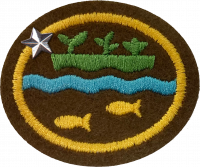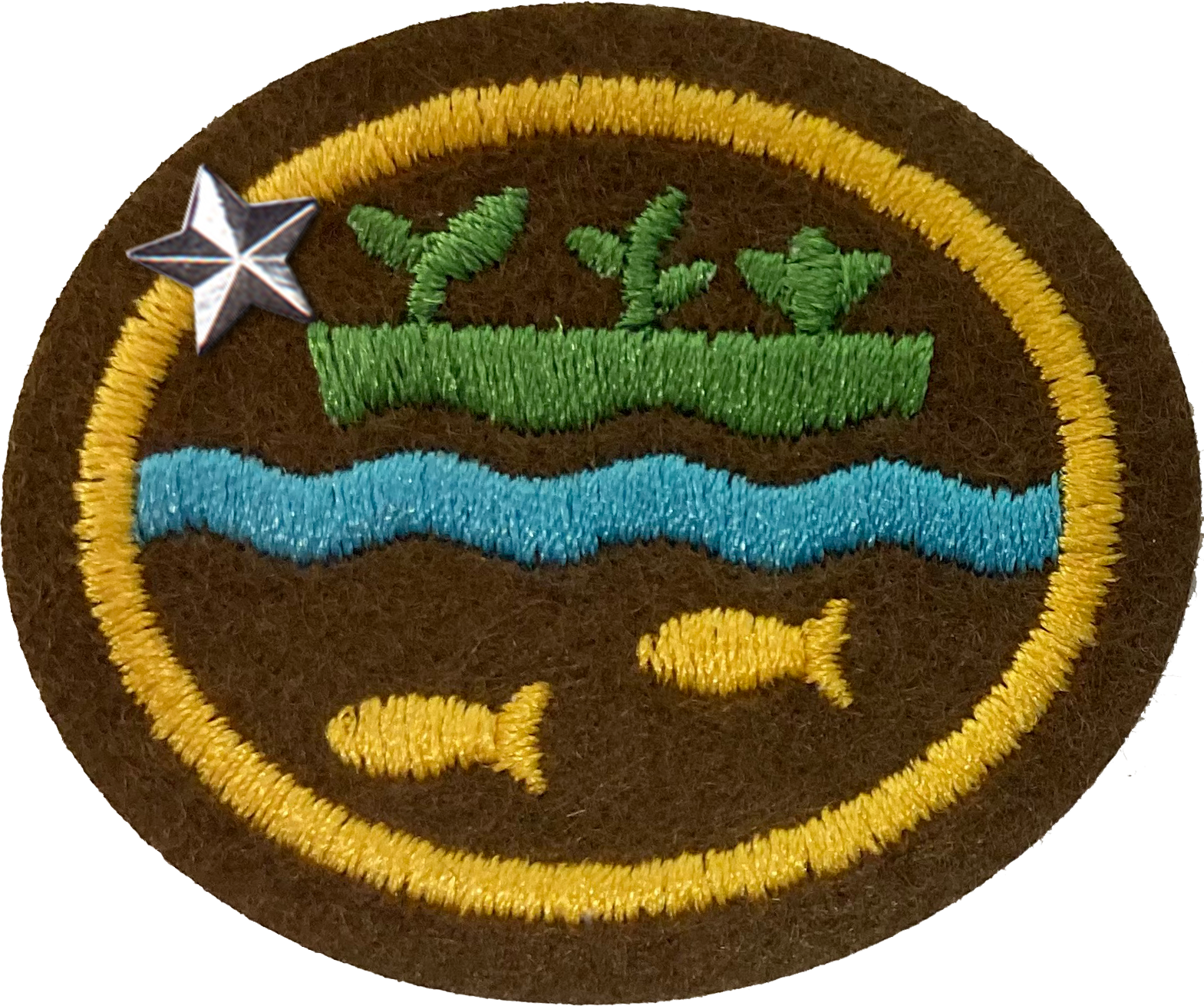Difference between revisions of "AY Honors/Hydroponics and Aquaponics - Advanced/Answer Key/es"
(Created page with "<!-- 1. Tener la especialidad de Hidroponía y acuaponía. --> {{honor_prerequisite|displayname=Hidroponía y acuaponía|honor=Hydroponics and Aquaponics}}") |
|||
| (8 intermediate revisions by 2 users not shown) | |||
| Line 21: | Line 21: | ||
<noinclude></noinclude> | <noinclude></noinclude> | ||
<noinclude></noinclude> | <noinclude></noinclude> | ||
| + | Trace elements essential for proper plant growth. These include boron, chlorine, nickel, manganese, iron, zinc, copper, and molybdenum among others. Micronutrients are nutrients needed in smaller amounts. They are not necessarily smaller in particle size. | ||
{{CloseReq}} <!-- 2a --> | {{CloseReq}} <!-- 2a --> | ||
| Line 26: | Line 27: | ||
<noinclude></noinclude> | <noinclude></noinclude> | ||
<noinclude></noinclude> | <noinclude></noinclude> | ||
| + | Trace elements essential for proper plant growth. These include carbon, hydrogen, oxygen, nitrogen, phosphorus, potassium, calcium, magnesium, and sulfur. Macronutrients are nutrients needed in larger amounts. They are not necessarily larger in particle size. | ||
{{CloseReq}} <!-- 2b --> | {{CloseReq}} <!-- 2b --> | ||
| Line 31: | Line 33: | ||
<noinclude></noinclude> | <noinclude></noinclude> | ||
<noinclude></noinclude> | <noinclude></noinclude> | ||
| + | One of three forms of nitrogen found in soil, and the one that plants use the most for growth. | ||
{{CloseReq}} <!-- 2c --> | {{CloseReq}} <!-- 2c --> | ||
| Line 36: | Line 39: | ||
<noinclude></noinclude> | <noinclude></noinclude> | ||
<noinclude></noinclude> | <noinclude></noinclude> | ||
| + | Growing aquatic animals (fish, shellfish, etc.) or aquatic plants (plants grown for human food or plants such as algae, often used in biofuels) for human use. While aquaculture most often involves using either or both for food, it also includes the raising of fish, shellfish, and ornamental animals for aquariums, and seaweed for multiple purposes, among agriculture reasons. | ||
{{CloseReq}} <!-- 2d --> | {{CloseReq}} <!-- 2d --> | ||
{{CloseReq}} <!-- 2 --> | {{CloseReq}} <!-- 2 --> | ||
| Line 42: | Line 46: | ||
<noinclude></noinclude> | <noinclude></noinclude> | ||
| − | + | <!-- 3. ¿Cómo funciona la acuaponía? Describir la relación entre las plantas, el agua, los peces, los desechos y las bacterias. --> | |
| − | <!-- 3. | + | |
| − | + | {{clear}} | |
<noinclude></noinclude> | <noinclude></noinclude> | ||
| Line 53: | Line 57: | ||
<!-- 4. ¿Qué es el «pH» y cómo afecta a las plantas en un sistema hidropónico o acuapónico? Medir el pH de un poco de agua y demostrar cómo se puede subir y bajar el pH. --> | <!-- 4. ¿Qué es el «pH» y cómo afecta a las plantas en un sistema hidropónico o acuapónico? Medir el pH de un poco de agua y demostrar cómo se puede subir y bajar el pH. --> | ||
| + | |||
| + | {{clear}} | ||
| + | |||
| + | {{clear}} | ||
| + | |||
| + | {{clear}} | ||
<noinclude></noinclude> | <noinclude></noinclude> | ||
| Line 60: | Line 70: | ||
<noinclude></noinclude> | <noinclude></noinclude> | ||
| − | <!-- 5. | + | <!-- 5. Dibujar el ciclo de un sistema hidropónico y un sistema acuapónico. Describir las diferencias entre ambos sistemas. Usar sus dibujos para explicar por qué el sistema hidropónico requiere una estrecha vigilancia continua y el sistema acuapónico no. --> |
| + | |||
| + | {{clear}} | ||
<noinclude></noinclude> | <noinclude></noinclude> | ||
| Line 69: | Line 81: | ||
<!-- 6. Investigar los requisitos para la certificación ecológica. ¿Qué beneficios trae la certificación ecológica? --> | <!-- 6. Investigar los requisitos para la certificación ecológica. ¿Qué beneficios trae la certificación ecológica? --> | ||
| + | |||
| + | {{clear}} | ||
| + | |||
| + | {{clear}} | ||
| + | |||
| + | {{clear}} | ||
| + | |||
| + | {{clear}} | ||
| + | |||
| + | {{clear}} | ||
| + | |||
| + | {{clear}} | ||
| + | |||
| + | {{clear}} | ||
<noinclude></noinclude> | <noinclude></noinclude> | ||
| Line 76: | Line 102: | ||
<noinclude></noinclude> | <noinclude></noinclude> | ||
| − | + | <!-- 7. Usando sus propios planes, diseñar y construir un sistema hidropónico y un sistema acuapónico, utilizándolos con éxito hasta la cosecha. Llevar un registro del cuidado de ambos sistemas y comparar y contrastar sus rendimientos. --> | |
| − | <!-- 7. | + | |
| − | + | {{clear}} | |
<noinclude></noinclude> | <noinclude></noinclude> | ||
| Line 86: | Line 112: | ||
<noinclude></noinclude> | <noinclude></noinclude> | ||
| − | + | <!-- 8. Por su cuenta o con un grupo, crear y llevar a cabo un plan para utilizar la hidroponía o la acuaponía como una forma de compartir su fe. Dar un informe a su club y/o congregación los resultados de compartir su fe. --> | |
| − | <!-- 8. | ||
| − | |||
<noinclude></noinclude> | <noinclude></noinclude> | ||
| Line 95: | Line 119: | ||
<noinclude></noinclude> | <noinclude></noinclude> | ||
==Referencias== | ==Referencias== | ||
| − | |||
| − | |||
<noinclude></noinclude> | <noinclude></noinclude> | ||
{{CloseHonorPage}} | {{CloseHonorPage}} | ||
Latest revision as of 17:37, 14 July 2022
Nivel de destreza
2
Año
2021
Version
31.12.2025
Autoridad de aprobación
División Norteamericana
1
2
2a
Trace elements essential for proper plant growth. These include boron, chlorine, nickel, manganese, iron, zinc, copper, and molybdenum among others. Micronutrients are nutrients needed in smaller amounts. They are not necessarily smaller in particle size.
2b
Trace elements essential for proper plant growth. These include carbon, hydrogen, oxygen, nitrogen, phosphorus, potassium, calcium, magnesium, and sulfur. Macronutrients are nutrients needed in larger amounts. They are not necessarily larger in particle size.
2c
One of three forms of nitrogen found in soil, and the one that plants use the most for growth.
2d
Growing aquatic animals (fish, shellfish, etc.) or aquatic plants (plants grown for human food or plants such as algae, often used in biofuels) for human use. While aquaculture most often involves using either or both for food, it also includes the raising of fish, shellfish, and ornamental animals for aquariums, and seaweed for multiple purposes, among agriculture reasons.
3
4
5
6
7
8


